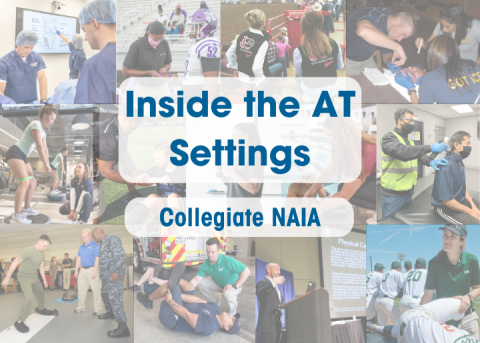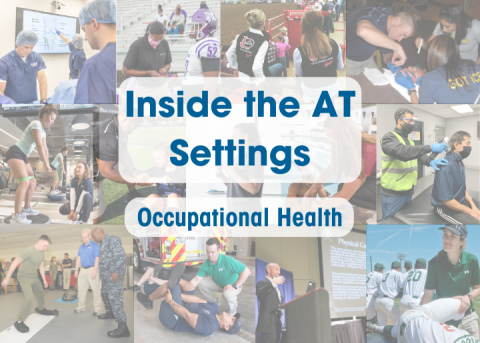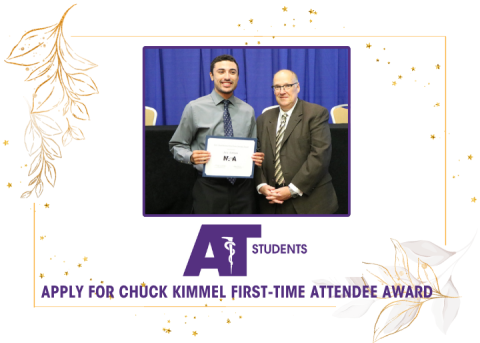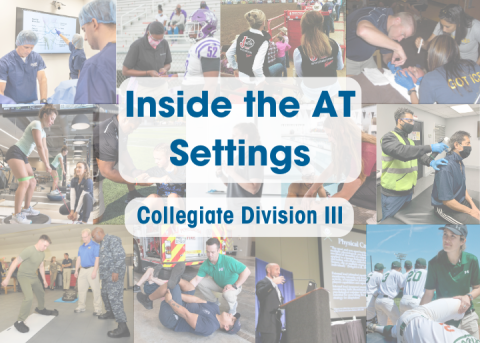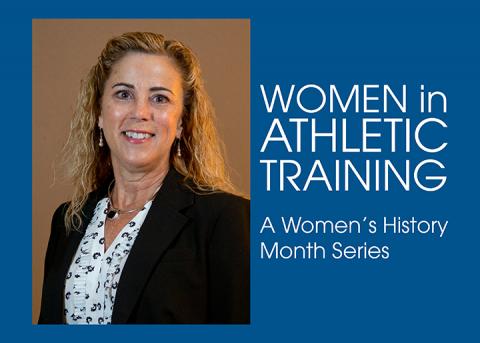
March is an exciting month for athletic trainers. In addition to being National Athletic Training Month, March is also Women’s History Month. This Women’s History Month, we’d like to celebrate all #ATwomen making a difference in the profession and their patients’ lives, and highlight four women in particular who have owned their impact – the four women currently serving on the NATA Board of Directors.
This week, District Three Director Katie Walsh Flanagan, EdD, LAT, ATC, shares her journey to athletic training, athletic training inspirations and advice for her fellow athletic trainers.
How did you get involved in the athletic training profession? What was your “ah-ha moment” when you knew you were being called to the profession?
I got involved in athletic training as a collegiate freshman when I fractured a few ribs and the head of my radius during preseason. I met a woman who was called the “athletic trainer” and she taped me up so I could play field hockey for Oregon State University without missing a beat. I thought a “person who can allow me to play, but still be safe?” – game changer! I switched my major from animal science to physical education, but ended up with a degree in zoology and all the required athletic training courses. I never looked back after that.
March is Women’s History Month, can you share with us who your women inspiration(s) are? Any women in the athletic training profession?
There were very few women in athletic training when I began my career, and I learned a lot of positive traits from some really great men with whom I worked. My first job as head athletic trainer was in Illinois, and our conference took me to places with amazing women, all in the NATA Hall of Fame now: Kathy Schniedwind, AT Ret., Marjorie Albohm, MS, AT Ret., Katie Grove, PhD, AT Ret., and Gretchen Schlabach, PhD, ATC.
How has the profession changed for women in athletic training since you started?
For me personally, it is not much different. I traveled with male teams most of my AT career, and was the only AT for the Chicago men’s professional soccer team back in the 1990s. I traveled all over the world with both the men’s and women’s U.S. soccer teams. Everyone knew I was an AT, and I worked out of locker rooms more often than not. Holding onto professional values and being a health care provider was who I was, and it was rarely questioned. More women are head athletic trainers now, and more are in leadership; but I believe it is because they are staying in the profession longer than they were when I first began.
In 1996, the NATA membership was 44 percent female. The most recent stats have come out and it’s now reversed, where it’s now 56 percent female and 44 percent male. Why do you think that is?
I can guess: Data show that most women leave the profession in their mid-30s. Even now, this is true. I venture to guess that some women only see their current job/career when their life changes, and family becomes more important. The key thing is that there are so many opportunities for ATs now, not just the long-hours athletic setting, but pretty much in every setting one can imagine. The key is to find that job/career, and stay engaged in athletic training.
Any advice for females just starting their profession or are considering becoming an athletic trainer?
This is not gender-specific. Always protect your athlete. Always. You are their only voice. Stand your ground, be prepared, be logical and clear. Know that pretty much no one at your setting has more knowledge about this injury than you do, except ATs at your site with more experience. Coaches do not know more than you do, so please remember you are well trained, have a degree and national certification. Be the athletic trainer, learn all you can, be passionate and learn how to communicate medical information in a clear, concise and professional manner. You’ve got this!
What are some ways that any athletic trainer can be a gender equality champion?
See above – and be the best athletic trainer you can be. Always read good evidence-based articles and know how to apply what you read. Listen, but be respectful and ready to protect your athlete. Professionalism and confidence go a long way.
We want to hear from you! Share your #ATwomen inspiration on social media this #WomensHistoryMonth. Don’t forget to also share how you’re owning your #ATimpact.

